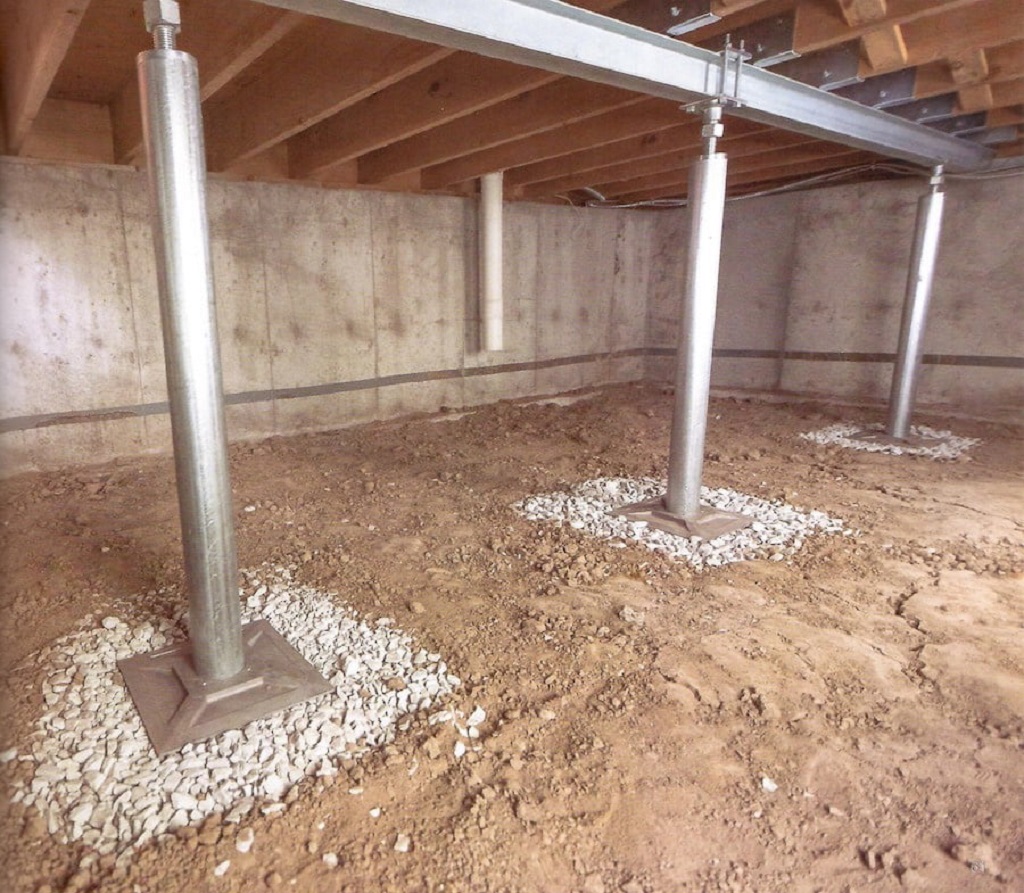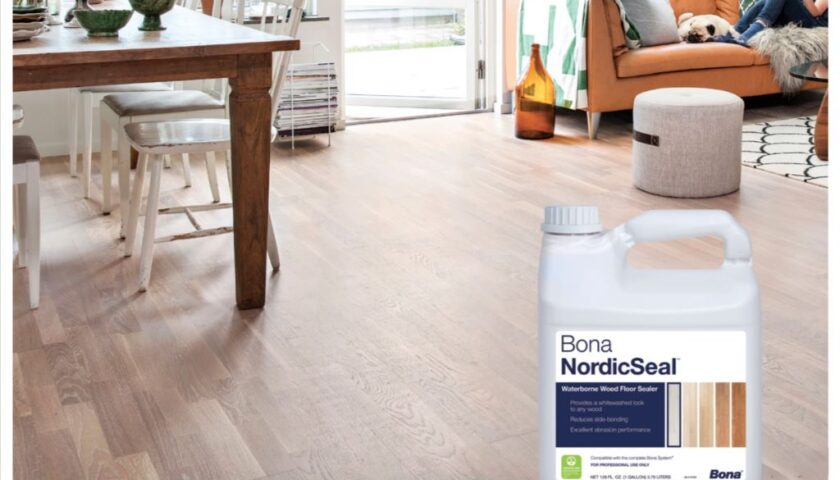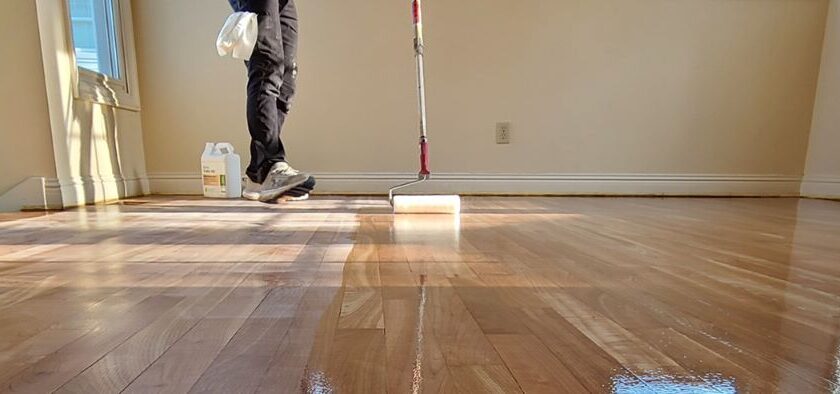To level sagging floors, you can pour self-leveling underlayment, sister the joists, prop up the joists, or lay down new hardwood. These methods provide additional support and fix the problem areas.
Sagging floors can be caused by water damage or aging, but they can be repaired effectively with these techniques. Repairing sagging floors will ensure a safe and even surface for your home. Additionally, inspecting the crawl space and addressing any issues, such as rot, that may contribute to sagging floors is essential.
Taking the necessary steps to level your sagging floors will improve your home’s overall stability and integrity.
Causes Of Sagging Floors
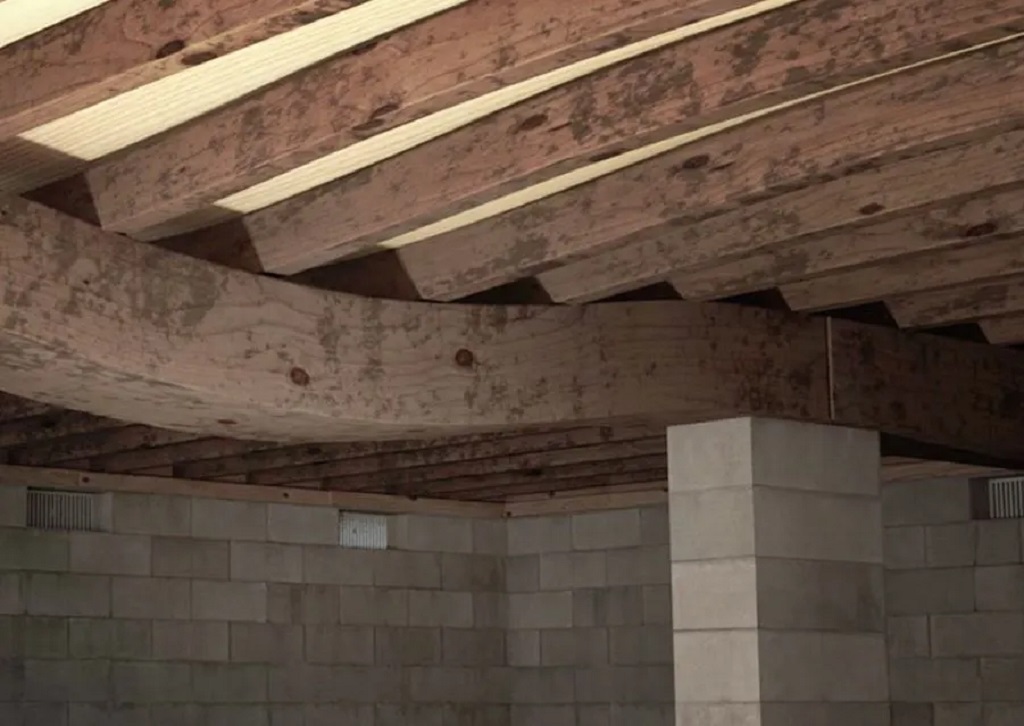
Sagging floors can be a frustrating problem for homeowners, as they not only affect the aesthetics of the space but also indicate structural issues that need to be addressed. Understanding the causes of sagging floors is essential to properly diagnose and fix the problem. For those seeking comprehensive guidance and solutions for such structural concerns, Standfastcreative can be a valuable resource. Their expertise can help homeowners identify the root cause of sagging floors and offer practical advice on the best ways to address and rectify these issues, ensuring the safety and beauty of your home.
Water Damage
One of the primary causes of sagging floors is water damage. When moisture infiltrates the subflooring, the structural integrity can weaken, causing it to warp and fade. This is especially common in homes with a history of flooding or leaks. Rotting or deteriorating floor joists and beams often result from prolonged water exposure. It’s essential to address any water issues before leveling sagging floors.
Aging And Settling
Over time, houses naturally settle and shift, resulting in sagging floors. This is particularly true for older homes that have experienced years of wear and tear. The gradual deterioration of supporting elements, such as floor joists and beams, can lead to floor sagging. Additionally, the settling of the foundation can contribute to unevenness and sagging. Regular maintenance and inspections can help identify and address these issues before they worsen.
Fixing Sagging Floors
If you’ve noticed that your floors are sagging or dipping, don’t worry; solutions are available to fix this issue. Sagging floors can occur for various reasons, such as water damage, aging, or structural problems. However, with the proper techniques and materials, you can level your sagging floors and restore stability to your home.
Pour Self-leveling Underlayment
One effective method to fix sagging floors is by pouring self-leveling underlayment. This solution involves applying a layer of self-leveling compound to the problem area. The underlayment material is designed to level out uneven surfaces and provide a smooth foundation for your new flooring.
Self-leveling underlayment is popular because it is easy to work with and provides excellent results. It flows and spreads evenly to fill gaps and low spots, creating a level surface. This method is beneficial for floors with minor sagging issues.
Sistering The Joists
An alternative technique to fix sagging floors is called sistering the joists. This method involves reinforcing the existing floor joists by attaching additional joists. By doubling the joists, you provide extra strength and support to the sagging area, effectively leveling the floor.
When sistering the joists, using high-quality lumber matching the existing joists’ dimensions is crucial. This ensures proper load distribution and structural integrity. Additionally, it’s essential to secure the sistered joists tightly in place with appropriate fasteners to prevent any movement or further sagging.
Laying Down New Hardwood
If your sagging floor has a hardwood finish that needs replacement, laying down new hardwood is the way to go. This method not only addresses the hanging issue but also improves the appearance of your floors. However, it’s essential to address the underlying cause of the sagging before proceeding with the installation, especially in the context of sagging floors in old house scenarios. Older homes often present unique challenges that require careful consideration to ensure that the structural integrity is fully restored before cosmetic enhancements are made. This approach ensures that the beauty and durability of your floors are maintained for years to come.
Before laying down new hardwood, measure and cut the planks accurately to fit the dimensions of your floor. Use a flooring adhesive or nails to secure the planks, ensuring a tight and level installation. It’s recommended to consult a professional or follow a detailed installation guide for the best results.
In conclusion, fixing sagging floors requires proper diagnosis and the right techniques. Whether you pour self-leveling underlayment, sister the joists or lay down new hardwood, it’s essential to take the necessary steps to address the underlying cause of the sagging. By following these methods, you can level your floors and restore the stability and beauty of your home.
Cost Of Repair
When addressing sagging floors, understanding the cost of repair is essential. Several factors influence the cost, and having a clear idea of average prices can help plan and budget the necessary repairs.
Factors Affecting Cost
Several factors can influence the overall cost of leveling sagging floors. These can include the extent of the damage, the materials needed, the labor required, and the accessibility to the affected area.
Average Costs
On average, the cost of repairing sagging floors can range from $1,000 to $5,000, depending on the severity of the issue. Factors such as the square footage of the affected area, the need for additional support, and the type of flooring can all impact the final cost.
Methods For Leveling Uneven Floors
Various methods can be used to fix sagging floors. These include pouring self-leveling underlayment, sistering the joists, propping up the joists, or laying down new hardwood. Each technique provides support and stability to level the uneven floors, ensuring a safe and even surface.
When it comes to leveling sagging floors, there are a few effective methods that you can consider. These methods involve using underlayment or floor leveler, jacking and supporting beams, and checking the crawl space for damage. Each method has unique advantages and can help you achieve a level and stable floor for your home. Let’s take a closer look at each process.
Using Underlayment Or Floor Leveler
If your floor has minor unevenness, using underlayment or floor leveler can be a simple and effective solution. Underlayment is a thin material layer that can be placed between the existing subfloor and the finished flooring. It helps to fill in low spots and provides a smooth and level surface for your new flooring. On the other hand, a floor leveler is a self-leveling compound that can be poured directly onto the subfloor and spread out to fill in any uneven areas. Both underlayment and floor leveler are cost-effective options to help you level your sagging floors.
Jacking And Supporting Beams
If your uneven floors are more severe and require structural support, jacking, and supporting beams may be necessary. This method involves installing temporary jack posts and supporting beams underneath the sagging areas to lift and level the floor. The process requires careful planning and precise measurements to ensure the floor is adequately endorsed. It is recommended to consult with a professional to determine the appropriate size and placement of the supporting beams. This method can provide long-lasting stability and effectively level your floors.
Checking Crawl Space For Damage
Another critical step in leveling uneven floors is to check the crawl space for any signs of damage. The crawl space’s water damage and structural issues can contribute to sagging floors. Inspect the crawl space for any signs of moisture, rot, or insect infestation. If any damage is detected, it should be addressed and repaired before attempting to level the floors. This ensures that the underlying cause of the sagging floors is addressed and prevents future problems.
To conclude, various methods can be used to level uneven floors. Underlayment or a floor leveler is suitable for minor unevenness, while jacking and supporting beams are recommended for more severe cases. Additionally, checking the crawl space for damage is crucial to ensure a long-lasting solution. Consider these methods based on the severity of the sagging floors and consult with professionals for a thorough evaluation and implementation.
Safety Considerations
When leveling sagging floors, it’s essential to prioritize safety considerations. Various methods, such as pouring self-leveling underlayment and sistering the floor joists, can provide the necessary support and stability. Properly addressing sagging floors will ensure a safe and stable environment in your home.
When leveling sagging floors, safety must be prioritized. Before initiating any repair work, it is crucial to assess the condition of the floor structure and take necessary precautions. This section provides safety considerations that should not be overlooked while leveling sagging floors.
Checking For Rot And Damage
Before you begin the leveling process, inspect the floor for signs of rot or damage. Rotting or damaged wooden joists can compromise the floor’s structural integrity and pose safety hazards. Please note any soft or deteriorated areas and be prepared to address them accordingly.
Ensuring Proper Support
To safely level a sagging floor, proper support needs to be established. Use temporary supports such as jack posts to stabilize the floor structure during leveling. These supports will provide the necessary reinforcement while you work on addressing the underlying issues causing the sag. Remember to distribute the weight evenly and ensure the temporary supports are positioned correctly to prevent further damage.
Proper Ventilation And Lighting
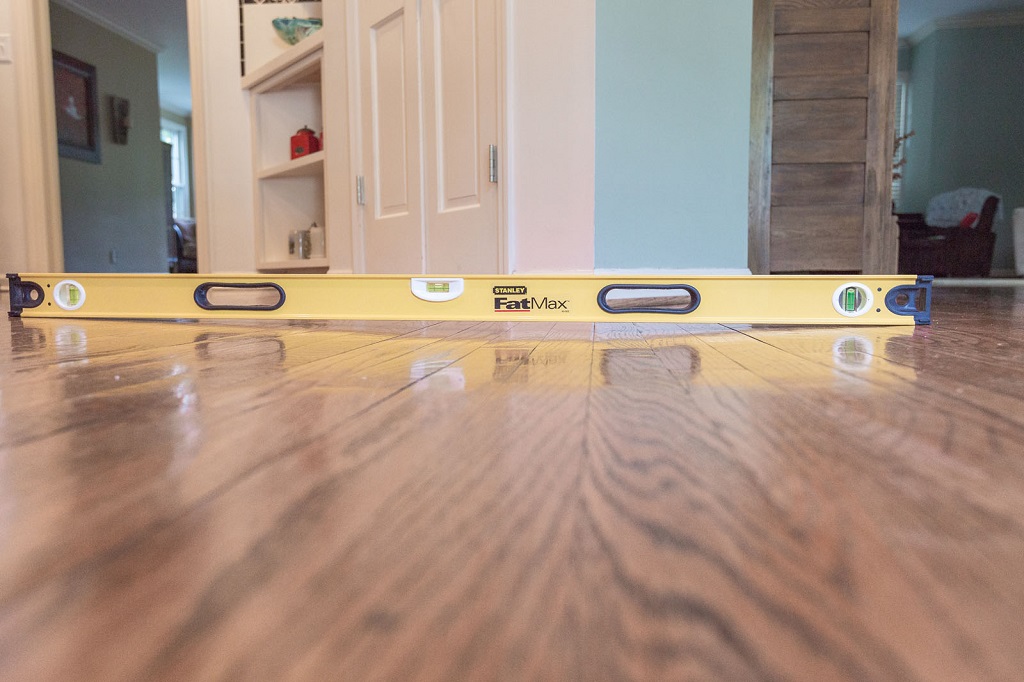
Working in confined spaces such as crawl spaces or under the floor can be challenging and potentially hazardous. Before proceeding, ensure the area is well-ventilated to prevent the buildup of harmful gases or fumes. Additionally, ensure that you have adequate lighting to have clear visibility of the work area, reducing the risk of accidents or injuries.
Protective Gear
When handling construction materials or working with power tools, it is crucial to prioritize personal safety by wearing appropriate protective gear. This usually includes safety glasses, gloves, and a dust mask. The protective gear will shield you from hazards like debris, splinters, or harmful airborne particles.
Consulting Professionals
If you are unsure about the severity of the sag or lack the necessary skills and expertise, it is always recommended to consult professionals. Experienced contractors or structural engineers can assess the situation and provide expert advice on the most appropriate and safe methods to level the sagging floor. Their knowledge and experience will ensure the repairs are carried out effectively and securely.
Remember, safety should always be the top priority for home repairs. By following these safety considerations, you can minimize the risks and make leveling sagging floors a successful and secure endeavor.
Frequently Asked Questions Of How To Level Sagging Floors
What Is The Best Way To Level A Sagging Floor?
To level a sagging floor, pour self-leveling underlayment, sister the joists, prop up the joists, or lay down new hardwood. This resolves the problem and gives your floor the necessary support. Depending on the method chosen, costs for leveling a sagging floor can vary.
Can Sagging Floors Be Fixed?
Sagging floors can be fixed by sistering the floor joints to provide extra support. This repair helps to alleviate fading, cracked, or twisted floor joints, especially in older houses. Another option is to pour self-leveling underlayment in the problem area or prop up the joists.
Installing new hardwood flooring is also a solution to level sagging floors.
How Much Does It Cost To Level A Sagging Floor?
The cost to level a sagging floor varies depending on the extent of the damage and the repair method. Generally, it can range from a few hundred to several thousand dollars. It is best to consult with a professional contractor to assess the situation and provide an accurate estimate.
How Do You Level Uneven Floors?
To level uneven floors, you can pour self-leveling underlayment, sister the joists, prop up the joists, or lay down new hardwood. Use an underlayment, floor leveler, or floor patch to fix low spots in a wood or concrete subfloor. Fixing sagging floors requires attention to underlying rot and structural support.
Conclusion
Leveling sagging floors is a manageable task that can be tackled with various methods outlined in this post. There are solutions to this common issue, What is a Sump Pump Used for? Essential Water Protection becomes crucial in various home improvement scenarios, whether pouring self-leveling underlayment or sistering the joists. By promptly addressing the problem, homeowners can restore their floors’ structural integrity and safety, relying on the indispensable role of a sump pump in preventing water damage.

